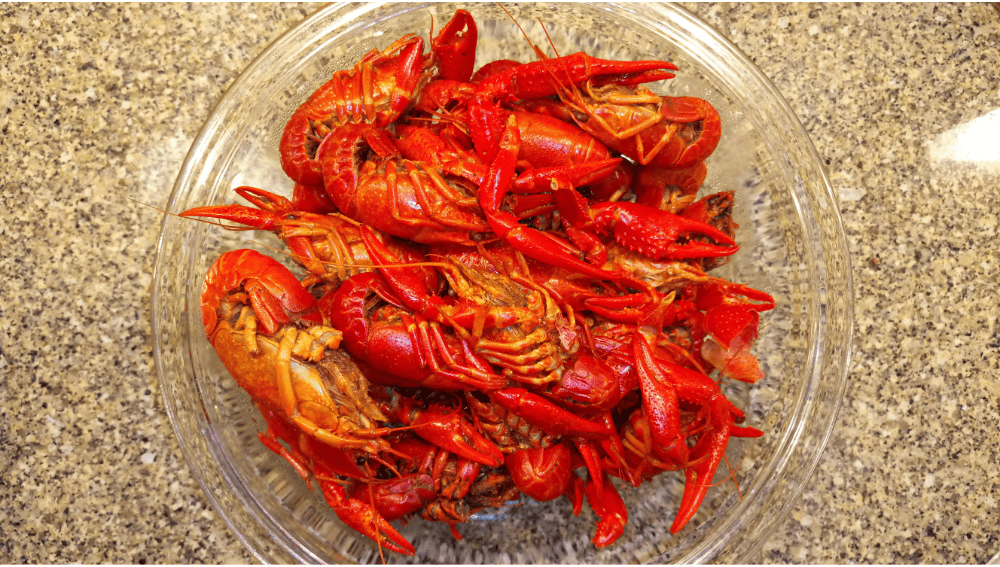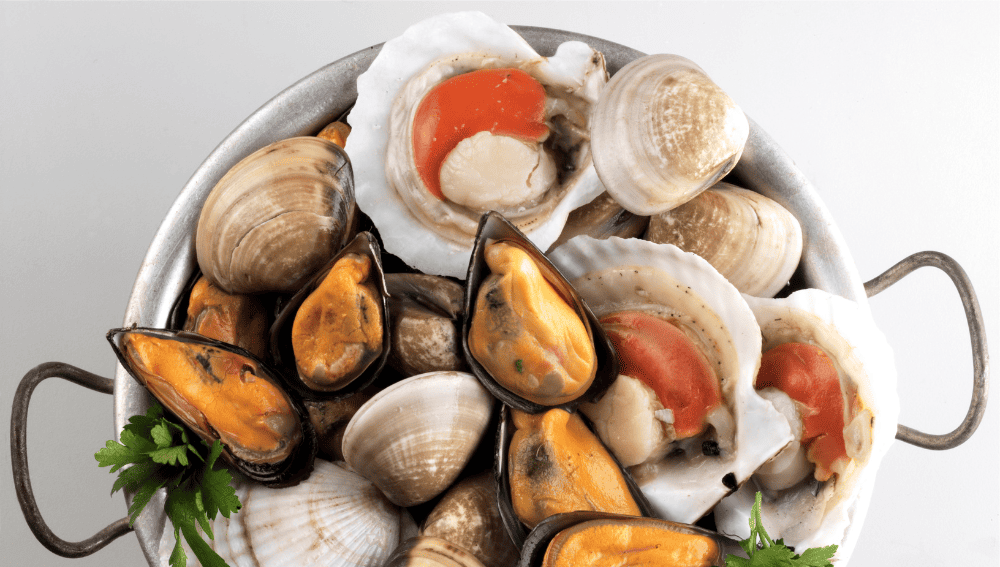Pregnancy is a time when women need to be extra cautious about their diet. They must ensure that they consume a balanced and nutritious diet that provides all the essential nutrients required for the healthy growth and development of their baby.
One food that often comes into question during pregnancy is crawfish.
Crawfish, also known as crayfish, are freshwater crustaceans that are commonly consumed in the southern and southeastern regions of the United States.
While they are a good source of protein, vitamins, and minerals, many women wonder if it is safe to eat crawfish during pregnancy. In this article, we will explore the topic of whether or not it is safe to eat crawfish during pregnancy and what the experts have to say about it.
Key Takeaways
- Crawfish can be a part of a healthy diet during pregnancy, but it is important to consume them in moderation and ensure that they are cooked properly.
- The FDA and EPA recommend that pregnant women consume 2-3 servings of low-mercury seafood per week for optimal health benefits.
- Raw or undercooked crawfish should be avoided during pregnancy as they can increase the risk of foodborne illness.
Related: Can pregnant women eat prosciutto
Understanding Crawfish and Pregnancy
Crawfish is a popular seafood that is enjoyed by many people around the world. However, pregnant women may wonder if it is safe to consume crawfish during pregnancy.
In this section, we will discuss what crawfish is, its nutritional value, and whether it is safe to eat during pregnancy.
What is Crawfish?
Crawfish, also known as crayfish, crawdads, or mudbugs, are freshwater crustaceans that resemble small lobsters. They are typically found in rivers, streams, and other bodies of freshwater.
Crawfish are a popular seafood in many parts of the world, especially in the southern United States.
Nutritional Value of Crawfish
Crawfish is a good source of protein, vitamins, and minerals. One serving of cooked crawfish (3 ounces) contains approximately:
- 70 calories
- 14 grams of protein
- 1 gram of fat
- 0 grams of carbohydrates
- 50 milligrams of cholesterol
- 200 milligrams of sodium
Crawfish is also a good source of vitamin B12, which is important for the development of a healthy nervous system.
Crawfish and Pregnancy
While crawfish is generally considered safe to eat during pregnancy, pregnant women should exercise caution when consuming it. This is because crawfish may contain high levels of mercury, which can be harmful to the developing fetus.
To minimize the risk of mercury exposure, pregnant women should limit their consumption of crawfish and other seafood to no more than two servings per week. They should also avoid eating raw or undercooked crawfish, which may contain harmful bacteria.
In conclusion, while crawfish is a nutritious and delicious seafood, pregnant women should consume it in moderation and take steps to minimize their exposure to mercury. As with any food, pregnant women should consult their healthcare provider before adding crawfish to their diet.
Health Benefits of Seafood During Pregnancy
Seafood is an excellent source of nutrients and vitamins that are essential for a healthy pregnancy. It is a rich source of protein, iron, and selenium, which are important for the growth and development of the fetus.
One of the most important nutrients found in seafood is omega-3 fatty acids, specifically DHA. DHA is crucial for the development of the fetal brain and eyes.
Pregnant women who consume seafood regularly have been shown to have higher levels of DHA in their breast milk, which is important for the baby’s brain development.
In addition to DHA, seafood is also a great source of lean protein. Protein is essential for the growth and development of the baby’s muscles and tissues. It also helps to keep the mother’s muscles and tissues healthy during pregnancy.
Seafood is also a good source of niacin, which is important for the development of the baby’s skin, nerves, and digestive system. Niacin also helps to regulate the mother’s hormones during pregnancy.
It is important to note that not all seafood is safe to consume during pregnancy. Some types of fish contain high levels of mercury, which can be harmful to the baby’s developing nervous system.
Pregnant women should avoid eating shark, swordfish, king mackerel, and tilefish.
Overall, seafood can be a healthy and nutritious addition to a pregnant woman’s diet. It is important to choose low-mercury options and to consume seafood in moderation.
Mercury Levels in Seafood
Mercury is a metal that can be found in the environment and can accumulate in fish and other seafood. It is a neurotoxin that can be harmful to the developing nervous system of a fetus or young child.
Therefore, it is important for pregnant women to be aware of the mercury levels in the seafood they consume.
Some types of fish are known to have higher levels of mercury than others. These include shark, swordfish, tilefish, and king mackerel. Pregnant women should avoid these fish altogether.
Other types of fish, such as tuna, mackerel, and marlin, have moderate levels of mercury and should be eaten in moderation.
Low-mercury seafood options include sardines, anchovies, herring, and carp. These fish are high in omega-3 fatty acids and are a good source of protein.
Other low-mercury fish include Chilean sea bass, grouper, halibut, mahi-mahi, monkfish, sablefish, snapper, flounder, haddock, hake, and black sea bass.
It is important to note that the mercury levels in fish can vary depending on where and how the fish was caught. Pregnant women should consult with their healthcare provider to determine which types of fish are safe to eat during pregnancy.
Additionally, it is recommended to limit consumption of all fish to 2-3 servings per week and to choose a variety of low-mercury options.
Overall, pregnant women can still enjoy seafood as part of a healthy diet, but it is important to be aware of the mercury levels in the fish they consume.
By choosing low-mercury options and limiting consumption of higher-mercury fish, pregnant women can safely enjoy the benefits of seafood without putting their developing baby at risk.
Related: Can you eat egg drop soup while pregnant
FDA and EPA Guidelines on Seafood Consumption
The Food and Drug Administration (FDA) and the Environmental Protection Agency (EPA) have jointly issued guidelines on seafood consumption for pregnant women, nursing mothers, and young children.
The guidelines are designed to help these groups make informed decisions about the types and amounts of seafood to eat while minimizing their exposure to contaminants such as mercury.
According to the FDA and EPA, seafood is an important part of a healthy diet and provides a variety of nutrients such as protein, omega-3 fatty acids, and vitamins.
However, some types of seafood may contain high levels of mercury, which can harm the developing nervous system of fetuses and young children.
The guidelines recommend that pregnant women, nursing mothers, and young children eat 2-3 servings (8-12 ounces) of a variety of seafood per week.
They also advise against eating certain types of seafood that are known to have high levels of mercury, such as shark, swordfish, king mackerel, and tilefish from the Gulf of Mexico.
The FDA and EPA also provide a helpful chart that lists the mercury levels in commonly eaten fish and shellfish. This chart can be used to make informed decisions about which types of seafood to eat and how much to consume.
It’s important to note that the guidelines are not intended to discourage seafood consumption altogether. Rather, they aim to provide pregnant women, nursing mothers, and young children with the information they need to make informed decisions about their seafood intake.
By following these guidelines, these groups can enjoy the health benefits of seafood while minimizing their exposure to harmful contaminants.
Understanding Other Shellfish
When it comes to seafood, there are a lot of different types of shellfish that pregnant women may be curious about. Here’s what you need to know about some of the most common types of shellfish:
Shrimp
Shrimp is a type of shellfish that is safe to eat during pregnancy, as long as it has been cooked thoroughly. Raw or undercooked shrimp can contain harmful bacteria that can cause food poisoning.
Crab
Like shrimp, crab is safe to eat during pregnancy as long as it has been cooked thoroughly. Pregnant women should avoid eating crab that has been caught in contaminated waters, as it may contain high levels of mercury.
Lobster
Lobster is generally safe to eat during pregnancy, as long as it has been cooked thoroughly. Pregnant women should also avoid lobster that has been caught in contaminated waters due to the risk of mercury exposure.
Clams and Oysters
Clams and oysters are safe to eat during pregnancy when they are cooked thoroughly. Raw or undercooked clams and oysters can contain harmful bacteria that can cause food poisoning.
Scallops
Scallops are safe to eat during pregnancy when they are cooked thoroughly. Raw or undercooked scallops can contain harmful bacteria that can cause food poisoning.
Overall, pregnant women can safely enjoy a variety of shellfish as long as they are cooked thoroughly and not caught in contaminated waters.
As always, it’s important to talk to your healthcare provider about any specific concerns you may have about your diet during pregnancy.
Related: Can I eat clam chowder while pregnant
Risks of Raw and Undercooked Seafood
Consuming raw or undercooked seafood during pregnancy can pose a risk to both the mother and the developing fetus.
Raw seafood, including raw fish, sushi, ceviche, and sashimi, may contain harmful bacteria, pathogens, or parasitic diseases that can cause food poisoning or other serious health problems.
Bacteria such as Listeria and Vibrio can be found in raw or undercooked seafood and can cause severe illness or even miscarriage.
Parasitic diseases such as toxoplasmosis and anisakiasis can also be transmitted through raw or undercooked seafood and can cause significant harm to the developing fetus.
It is recommended that pregnant women avoid consuming raw or undercooked seafood altogether. Instead, they should opt for fully cooked seafood, which can be a safe and healthy source of protein and omega-3 fatty acids.
Pregnant women should also be cautious when consuming fish with high levels of mercury, such as shark, swordfish, king mackerel, and tilefish.
To reduce the risk of foodborne illness, pregnant women should follow proper food handling and preparation techniques. This includes washing hands and surfaces thoroughly, cooking seafood to the appropriate temperature, and avoiding cross-contamination with other foods.
In summary, while seafood can be a healthy addition to a pregnant woman’s diet, it is important to be aware of the risks associated with consuming raw or undercooked seafood.
By following proper food safety guidelines and choosing fully cooked seafood, pregnant women can safely enjoy the benefits of this nutritious food.
Food Safety During Pregnancy
Pregnancy is a time when women need to pay extra attention to their diet and food safety. Consuming certain foods can put both the mother and the baby at risk for various health issues.
Therefore, it is important to be aware of the food safety guidelines during pregnancy.
One of the main concerns during pregnancy is the risk of foodborne illnesses caused by bacteria, viruses, and parasites. These can cause serious health problems for both the mother and the baby. To avoid these risks, it is important to follow proper food safety practices.
Fully cooked and properly cooked seafood is safe to eat during pregnancy. Seafood is a good source of protein, omega-3 fatty acids, and other nutrients that are important for the baby’s development.
However, pregnant women should avoid raw or undercooked seafood, such as sushi, sashimi, oysters, and clams, as they may contain harmful bacteria and viruses.
It is important to cook seafood to the proper internal temperature to kill any bacteria or viruses. The FDA recommends cooking seafood to an internal temperature of 145°F (63°C) for fish, shrimp, lobster, and crab.
Pregnant women should also avoid eating refrigerated smoked seafood, such as lox, as they may contain Listeria, a harmful bacteria that can cause miscarriage or stillbirth.
To prevent cross-contamination, pregnant women should use separate cutting boards for raw meat, poultry, and seafood, and wash their hands and utensils thoroughly after handling these foods. It is also important to store food properly and to avoid consuming expired or spoiled food.
In summary, pregnant women should pay extra attention to food safety and avoid consuming raw or undercooked seafood, as well as other foods that may be contaminated with harmful bacteria or viruses.
By following proper food safety practices, pregnant women can ensure a healthy pregnancy and a healthy baby.
Nutrition and Supplements During Pregnancy
Maintaining a healthy diet during pregnancy is essential for the proper growth and development of the fetus. A well-balanced diet can also help prevent complications during pregnancy and promote postpartum recovery.
Pregnant women should consume a variety of foods from all food groups, including fruits, vegetables, whole grains, lean proteins, and healthy fats.
In addition to a healthy diet, pregnant women may need to take supplements to ensure they are getting enough essential nutrients. Prenatal vitamins, which typically contain folic acid, iron, and calcium, are recommended for all pregnant women.
Folic acid is important for the development of the neural tube, which forms the brain and spinal cord. Iron is necessary for the production of red blood cells, and calcium is needed for the development of strong bones.
Copper and zinc are two minerals that are also important during pregnancy. Copper helps with the formation of connective tissue, while zinc is essential for the immune system.
Pregnant women should aim to consume 1-1.3 mg of copper and 8-11 mg of zinc per day. These minerals can be found in a variety of foods, including meat, seafood, nuts, and whole grains.
It is important to note that pregnant women should avoid certain foods that may be harmful to the fetus.
Raw or undercooked seafood, including crawfish, should be avoided due to the risk of foodborne illness. Pregnant women should also limit their intake of caffeine and avoid alcohol entirely.
Breastfeeding is also an important part of postpartum nutrition. Breast milk provides the necessary nutrients for the growth and development of the infant, and it also contains antibodies that can help protect against infections.
It is recommended that women breastfeed exclusively for the first six months of the infant’s life and continue to breastfeed while introducing solid foods up to at least 12 months of age.
Overall, maintaining a healthy diet and taking necessary supplements during pregnancy can help ensure the health of both the mother and the fetus.
Conclusion
In conclusion, while crawfish can be a healthy and delicious addition to a balanced diet, pregnant women should exercise caution when consuming this type of seafood.
The potential risks associated with eating crawfish during pregnancy, including exposure to harmful bacteria and toxins, mean that it is important to take precautions to ensure the safety of both mother and baby.
While some studies suggest that moderate consumption of cooked crawfish may be safe during pregnancy, it is important to note that there is still a lack of conclusive evidence on the subject.
Therefore, pregnant women should consult with their healthcare provider before adding crawfish to their diet.
Overall, pregnant women should prioritize the safety of their unborn child and err on the side of caution when it comes to consuming seafood.
By following the guidelines set forth by their healthcare provider and avoiding high-risk seafood, pregnant women can ensure that they are providing their baby with the best possible start in life.
Frequently Asked Questions
Is it safe to eat crawfish during pregnancy?
Yes, it is generally safe to eat crawfish during pregnancy. However, it is important to ensure that the crawfish is cooked thoroughly and properly.
What are the risks of eating crawfish while pregnant?
Eating crawfish during pregnancy can pose a risk of bacterial infections such as salmonella or listeria. These infections can cause serious harm to both the mother and the unborn baby.
Can eating crawfish harm my unborn baby?
Eating crawfish in moderation is unlikely to harm the unborn baby. However, if the crawfish is not cooked properly or is contaminated, it can pose a risk of infection which can harm the baby.
What other types of seafood should I avoid during pregnancy?
Pregnant women should avoid consuming high-mercury seafood such as shark, swordfish, king mackerel, and tilefish. Raw or undercooked seafood, including sushi, should also be avoided.
How much crawfish can I safely eat while pregnant?
Pregnant women can safely consume crawfish in moderation. The American Pregnancy Association recommends limiting seafood intake to 12 ounces per week.
Are there any benefits to eating crawfish while pregnant?
Crawfish is a good source of protein, vitamins, and minerals such as iron, magnesium, and zinc. It can also help to reduce the risk of heart disease and improve brain function.

Iesha is a loving mother of 2 beautiful children. She’s an active parent who enjoys indoor and outdoor adventures with her family. Her mission is to share practical and realistic parenting advice to help the parenting community becoming stronger.



